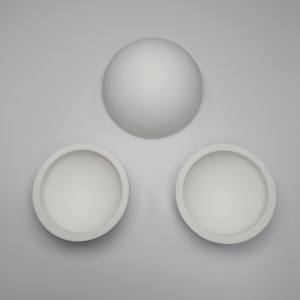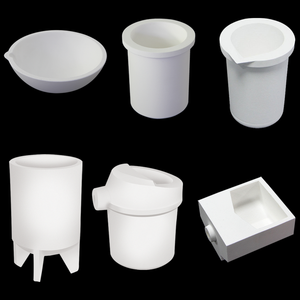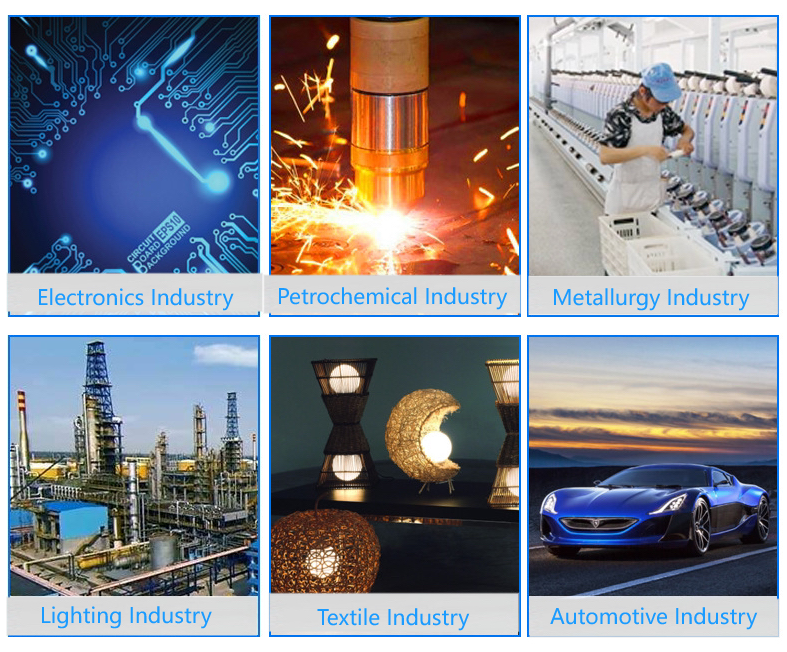Professional industry ceramic supplier, silicon nitride, silicon carbide, aluminum nitride and any other kinds of ceramics.
PRODUCT PARAMETERS
Description
Overview of High Temperature Carbon Sulfur Analyzer SiO2 Silica Ceramic Crucible
High Temperature Carbon Sulfur Analyzer SiO2 Silica Ceramic Crucible are specialized containers designed for withstanding extremely high temperatures in laboratory and industrial settings. They are essential for processes such as melting, calcining, and heat-treating a wide variety of materials, including metals, glasses, and chemicals. Our crucibles are engineered for superior thermal stability and chemical resistance, ensuring purity and reliability in the most demanding applications.
Features of High Temperature Carbon Sulfur Analyzer SiO2 Silica Ceramic Crucible
-
Exceptional Thermal Shock Resistance: Withstands rapid temperature changes without cracking, ensuring durability and a long service life.
-
High-Temperature Stability: Maintains structural integrity at extreme temperatures, often exceeding 1500°C.
-
Excellent Chemical Inertness: Resists corrosion and reaction with molten metals, acids, and aggressive chemical fluxes.
-
High Purity & Low Contamination: Manufactured from premium materials to prevent sample contamination during sensitive processes.
-
Optimized Thermal Properties: Designed for efficient heat transfer and consistent performance in furnace environments.
-
Robust Mechanical Strength: Offers good resistance to physical impact and abrasion during handling and use.
Specifications of High Temperature Carbon Sulfur Analyzer SiO2 Silica Ceramic Crucible
Right here are the requirements for the High Temperature Carbon Sulfher Analyzer SiO2 Silica Ceramic Crucible:
This crucible is made from pure silicon dioxide (SiO2). It manages the extreme warm inside carbon sulfur analyzers. These instruments procedure carbon and sulfur web content in materials like metals, minerals, and coal. The crucible holds the example during the heat combustion process.
The crucible holds up against temperature levels over 1600 ° C (2912 ° F). It does not melt or flaw at these degrees. This heat resistance is vital. The analyzer requires extremely high heat to shed the sample totally. The crucible should stay intact.
Thermal shock resistance is solid. The crucible heats up and cools down quickly without splitting. Quick temperature level modifications take place usually during screening. The crucible makes it through these cycles dependably.
Chemical inertness is one more key attribute. The silica ceramic withstands acids and fluxes utilized in the analysis. Common changes consist of tungsten or iron chips. The crucible material does not respond with these substances. This prevents contamination of the sample. Measurement precision stays high.
The crucible style is simple. It has a round form. The size is typically around 25mm external size and 30mm elevation. Weight is light, generally about 10 grams. This common size fits most analyzer heaters flawlessly. The open top permits easy example loading and gas circulation.
Reduced empty worths are crucial. The crucible itself adds nearly no additional carbon or sulfur. Pure SiO2 ceramic ensures very little disturbance. History levels stay reduced. This causes specific and trustworthy examination results for micronutrient.
Mechanical toughness is excellent. The crucible holds the example weight without breaking. It stands up to breaking during handling. Operators can utilize it securely and successfully.
Sturdiness is exceptional. The crucible endures multiple home heating cycles. It lasts through many evaluations. This lowers lab costs and downtime. Replacing crucibles occurs less frequently.
The smooth surface area stops sample sticking. Ash deposit wipes quickly after burning. Crucible preparation is straightforward for the next test.
Applications of High Temperature Carbon Sulfur Analyzer SiO2 Silica Ceramic Crucible
These crucibles collaborate with high temperature carbon sulfur analyzers. They hold examples throughout evaluation. The analyzer warms samples extremely to discover carbon and sulfur quantities. The crucible product matters a great deal. Silica ceramic (SiO2) takes care of the extreme warmth required. Other materials might melt or break. These crucibles remain solid. They withstand thermal shock when temperatures change quickly. This is common in analyzer operation.
They are chemically inert. They do not respond with the samples or the change products added. This stops contamination. Contamination damages test results. Accurate outcomes are the major objective. Reputable crucibles provide regular information. Labs need this for quality control and research.
These SiO2 crucibles are used throughout sectors. Steel manufacturers test steel, iron, alloys, and ores. Mining firms evaluate minerals and geological examples. Cement plants inspect basic materials and end product quality. Research study laboratories use them for numerous material researches. Anywhere exact carbon and sulfur dimension is needed, these crucibles are essential.
Their style fits analyzer requirements. They hold up against rapid heating cycles consistently. They sustain the corrosive gases released during sample combustion. This strength implies less crucible adjustments. Much less downtime happens. Expenses stay lower. They provide a stable atmosphere for complete sample combustion. Complete combustion is necessary for right carbon and sulfur analyses. Utilizing the right crucible straight influences outcome accuracy and laboratory effectiveness.
Company Profile
Tanki New Materials Co.Ltd. focus on the research and development, production and sales of ceramic products, serving the electronics, ceramics, chemical and other industries. Since its establishment in 2015, the company has been committed to providing customers with the best products and services, and has become a leader in the industry through continuous technological innovation and strict quality management.
Our products includes but not limited to Aerogel, Aluminum Nitride, Aluminum Oxide, Boron Carbide, Boron Nitride, Ceramic Crucible, Ceramic Fiber, Quartz Product, Refractory Material, Silicon Carbide, Silicon Nitride, ect. please feel free to contact us.
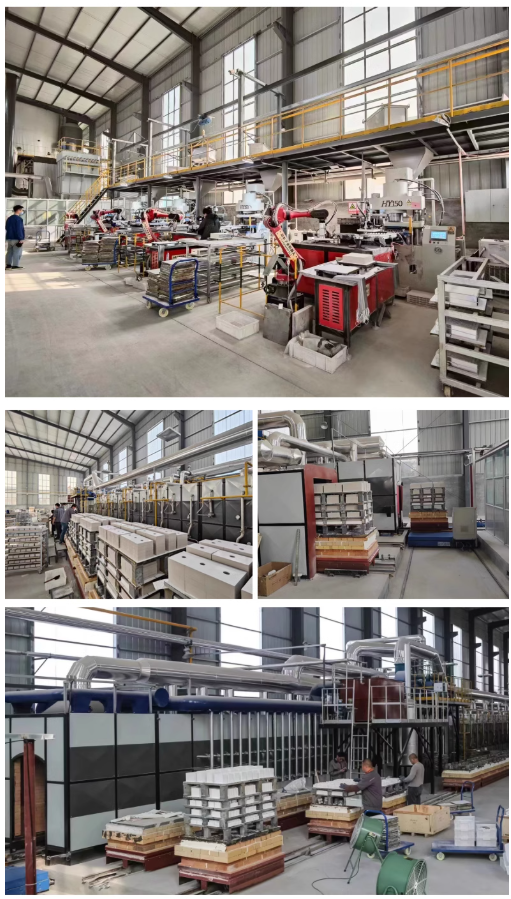
Payment Methods
T/T, Western Union, Paypal, Credit Card etc.
Shipment Methods
By air, by sea, by express, as customers request.
5 FAQs of High Temperature Carbon Sulfur Analyzer SiO2 Silica Ceramic Crucible
What does this crucible do?
This crucible holds your sample inside the carbon sulfur analyzer. It sits directly in the high heat zone. The analyzer burns the sample to check its carbon and sulfur amounts. This crucible handles the extreme temperatures needed for accurate testing. It keeps the sample contained during the burning.
Why is it made from SiO2 silica ceramic?
Silica ceramic is very pure. It won’t add extra carbon or sulfur to your sample during the test. This purity is critical for getting correct results. The material also handles sudden temperature changes well. It resists cracking much better than other ceramics might. Its chemical stability prevents reactions with the hot sample gases.
How hot can it get?
This crucible is designed for the analyzer’s furnace temperatures. It works reliably up to 1600°C (2912°F). This covers the high heat needed to completely burn most metal and mineral samples. It stays stable and doesn’t soften or warp at these levels. Do not exceed this temperature limit. Extreme heat can damage it.
Can I use it more than once?
Yes, you can usually reuse it several times. Carefully inspect it after each use. Look for cracks, chips, or major discoloration. A damaged crucible can break during the next run. Broken pieces can ruin the analyzer furnace. It also risks contaminating future samples. Replace it if you see any damage. Always clean it thoroughly between uses.
How do I handle it safely?
Handle it with clean gloves. Finger oils can contaminate it. Never touch the inside surface. Avoid metal tools; they can scratch it. Use ceramic-tipped tongs for moving it. Place it gently into the furnace. Clean it carefully after each use. Remove ash with a soft brush. Avoid harsh chemicals or scrubbing. Store it in a clean, dry place. Keep it away from dust and moisture.
REQUEST A QUOTE
RELATED PRODUCTS
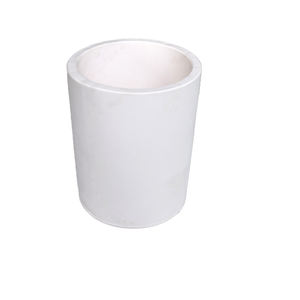
High Purity Ceramic Crucibles Boron Nitride 99.7%
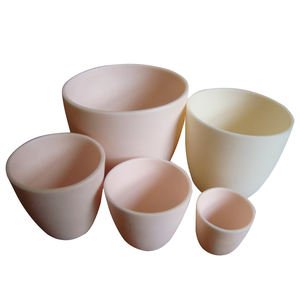
Lab glassware Ceramics Core Crucible 30ml 40ml 60ml G1 G2 G3 G4 G5 Crucible Filter Sand Core Crucible
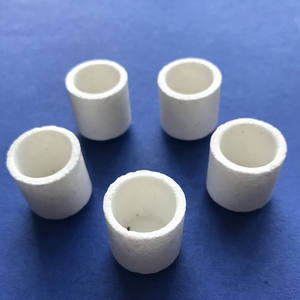
Customized HBN High Quality Boron Nitride Crucible Ceramic Casting High Temperature Stable Chemical Inertness
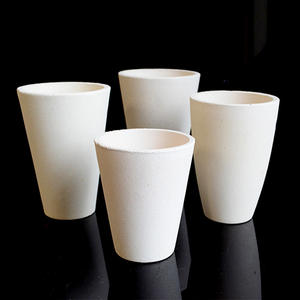
Goldsmith Machine Tools Ceramic Crucible Pots Smelting Crucibles for Jewelry
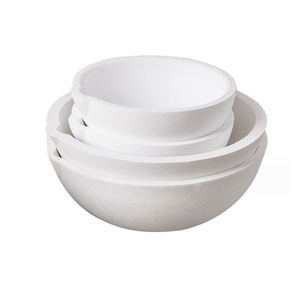
HIGH QUALITY CRUCIBLE for GOLD SMELTING Ceramic Fire Clay Fire Assay Crucibles and Magnesite Cupels for Gold Assaying
